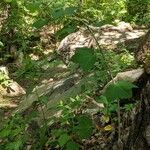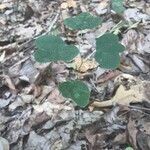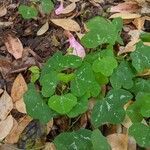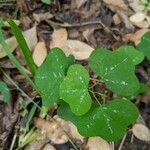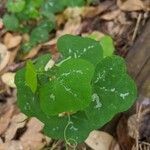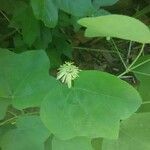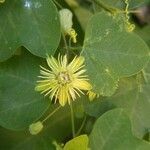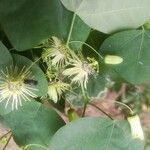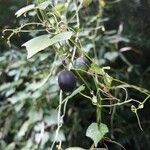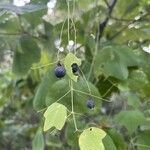Climbing or trailing to 3 m; petioles not glandular; lvs truncate to subcordate at base, with margins meeting across the petiole, 3-lobed, the lobes semi-orbicular or depressed-ovate, entire, obtuse or rounded; fls greenish-yellow, 2–2.5 cm wide; exterior corona yellow; fr purple, 1 cm thick. 2n=24, 84. Moist soil; all summer. Var. lutea, with the cal, petioles, and young stems pilose, occurs from Pa. and W.Va. to Fla., Tenn., and Ala. Var. glabriflora Fernald, glabrous, occurs from O. to Mo. and Okla., s. to Ala. and Tex.
It is like Passiflora incarnata but smaller. The leaves are wider than they are long. The flowers are 2-2.5 cm across. They are greenish-yellow.
